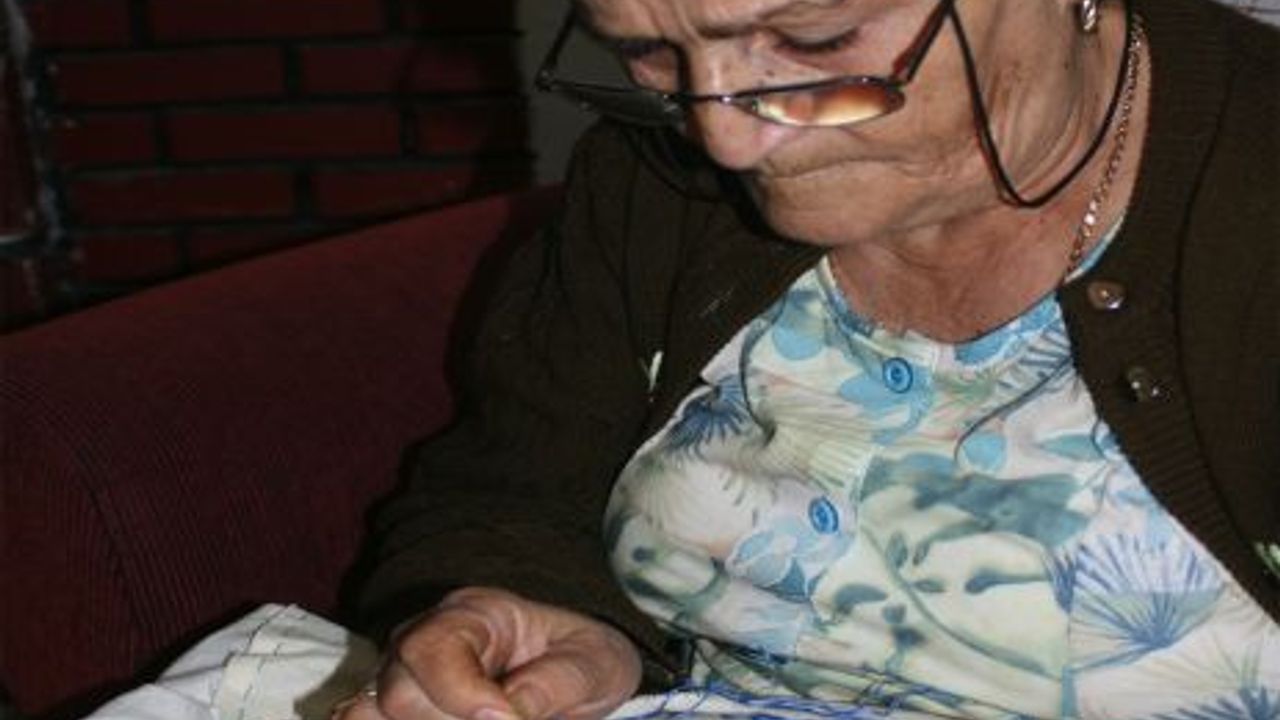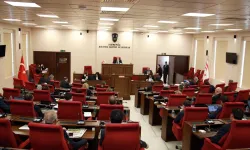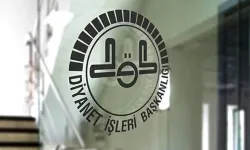Back in the days, embroidery of Lapta would be embroidered on nightgowns and the collars of pyjamas. Motifs of nightgowns would be the same as those of pyjamas so that they would look like a set. Although right now the demand for once popular embroidery of Lapta is low, there still are people who are interested in it.
“Motifs are left from my mother. Each motif has a different characteristic, a different colour. Unfortunately many people chance their original colours to fit them to the decorations of their houses.”
“Back then, this embroidery was taught to the people in the region by the teacher of the time. Later, it was spread to other villages as well but after a while people stopped paying attention to it.”
The eras during which women would gather to chat and embroider became a thing of the past. In this ever changing process, many traditions, customs and habits are becoming extinct. In spite of this, there still are people who are passionate about these. The most familiar faces of embroidery of Lapta, which is one of the crafts that has no power to resist the passing of time, are Sıdıka Ruso and her daughters.
We visit Sıdıka Ruso, who plays a special role in representing our region and enabling the continuation of this culture that became the symbol of our region, at her house in one afternoon. During this friendly, joyful and gracious meeting, we learn about the fineness of embroidery of Lapta and time travel to the past!
“I started when I was 10”
Born on 21 August 1942, Sıdıka Ruso is originally from Lapta. Ms. Sıdıka, whose parents are also from Lapta, graduated from Lapta primary school. Later on, she could not continue her education as education of girls was not deemed important and she would need to travel to Nicosia for school. As a result, she turned this situation into a positive experience by learning this art that would save her and her family’s life. Sıdıka Ruso says “When I lost my hope about going to school I learned embroidery of Lapta from my mother and since I am 10 years old I am occupied with this art.”
Samples are said to come from Italy
We wonder about the history of this rarely seen and known embroidery and ask Sıdıka Ruso about it. According to what she knows and heard, the beginning of this is 1930s. “I do not know if there is an earlier beginning. But this embroidery came to Cyprus from Italy. Back then, this embroidery was taught to the people in the region by the teacher of the time. Later, it was spread to other villages as well but after a while people stopped paying attention to it” says Ms. Sıdıka. And then we talk about how her daughters and daughter in law are among the few who is still occupied with this handcraft.
It is done by counting with a needle
We mention the issue of details of the embroidery as well as the discussion continues. It is done with embroidery hoop, batiste, threat and needle. Being done with counting with a needle, this embroidery is called “Number Embroidery.” We ask Ms. Sıdıka the key to this embroidery and she responds “You will only go between two cables, otherwise motifs are not proper and if there is a mistake somewhere all of the motifs are gone to waste.” Further into our conversation, she complains about the embroiders of Lapta as they do not stay loyal to the original samples. She says “Motifs are left from my mother. Each motif has a different characteristic, a different colour. Unfortunately many people chance their original colours to fit them to the decorations of their houses.”
There still are people who are passionate about it
Stating that embroidery of Lapta started in their region and spread to other villages, Ruso mentions that people would even want their pyjamas to be embroider in the Lapta pattern.
She says “It would be embroidered to the nightgowns and the collars of pyjamas. Motifs of nightgowns would be the same as those of pyjamas so that they would look like a set. Rich people would also get their suits of room embroidered.” Although right now the demand for once popular embroidery of Lapta is low, she says that there still are people who are interested in it.
Everyone knows them
It is not only people form Lapta who knows Sıdıka Ruso and her daughters. Many people in the country know them. They attend festivals and both make money and exhibit these embroideries to be able to continue their mission on perpetuating the embroidery of Lapta. Daughter of Sıdıka Ruso joins our conversation from time to time. She says that they attend events especially for young people to see and learn the embroidery of Lapta.
War and migration
We could not help but talk about old days. She told us and we listened. As she recalls bitter memories of war and migration, she states: We migrated from Lapta to Kyrenia in 1964. I gave birth to my third child on March. We could not work. Until 1968, we made ends meet with the money I made from embroidery of Lapta. Later on we migrated to Bosporus from Kyrenia. We used to live in the barracks. My husband was a fighter. I said to myself I am sitting here doing nothing. I thought of going to the Greek side and selling my embroideries there. I spoke with the commander and I told him that we are in a bad situation, I practice this art and want to work. So I asked for permission to go to Kyrenia.
This embroidery is suppressed
According to her, Sıdıka Ruso goes to the Greek woman with whom she used to sell her embroideries before war and asked for work. So she starts working again until 68-70. Ruso says that she started working for the EU common market in 1970, embroideries full of luggages. Recalling those days, she says “I could not keep up with the demand”, with a yearning feeling. After the 1974 war, they could not continue working. According to her “this handicraft is suppressed for years now.”
Embroidery of Lapta is made to go Bankrupt
Her memories after war are also very interesting. In 1978, an English finds Sıdıka Ruso for her to do work for them. Back in the day, the English agreed with a cooperative yet Ms. Sıdıka does not want to work with them as they but 5liras worth of pieces for 1 lira only. As the ones working for the cooperative could not meet the deadline, they collected the pieces from depots left from the war and sent them aboard. However, this cooperative went bankrupt due to the “Made in Cyprus” stamp behind them. Stating that they have experienced many hardships, Ruso says that now they make ends meet with orders.
“We are in cooperation with the municipality”
We ask them whether they get support or contribution from somewhere. Ms. Ayfer states that they work in cooperation with the Lapta Municipality. She states that women courses in the village should be established so that embroidery of Lapta is not forgotten and more people learn about it. Ms. Ayfer states that municipality is currently working on starting such courses. Finally, she repeats her greatest worry: “We are concerned about changes made to the original samples. Some teachers do not teach the samples right, we want everyone to learn it the right way.”



